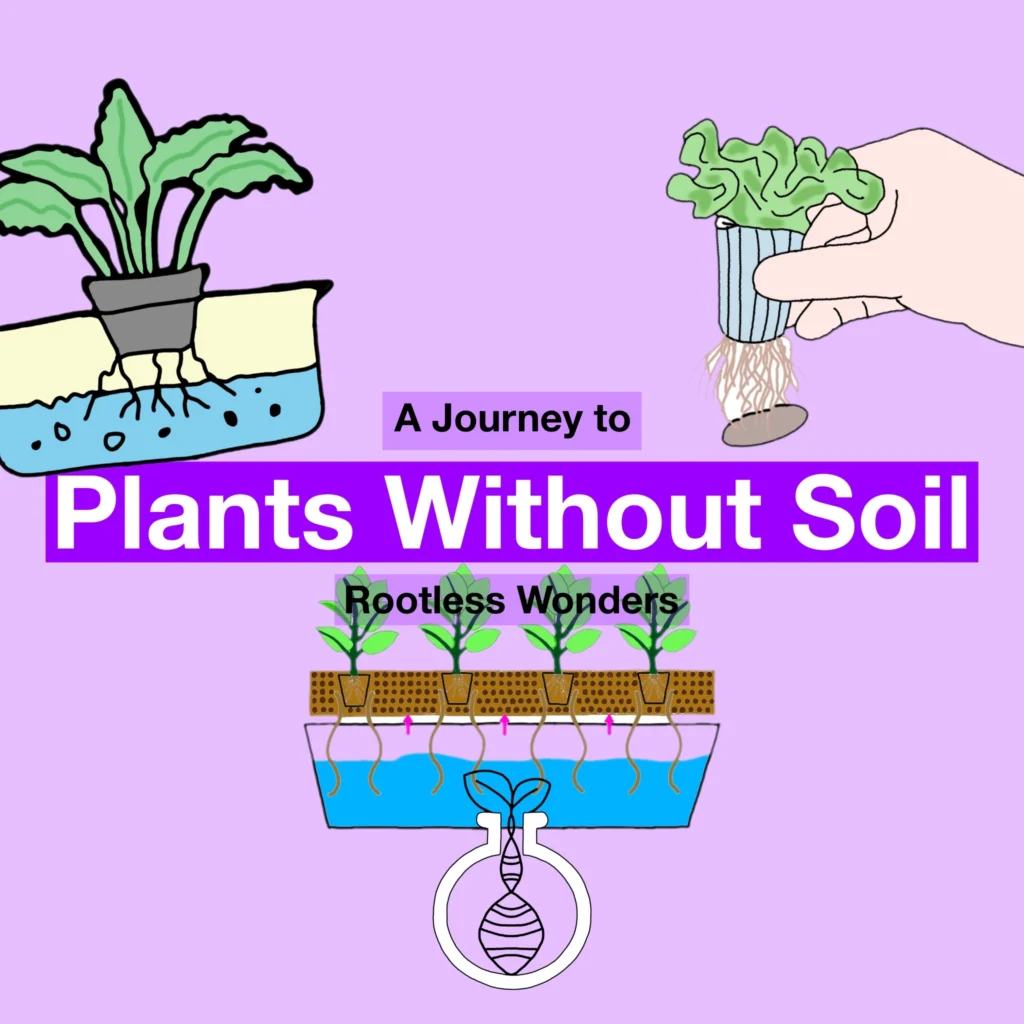Imagine a world where plants thrive without the touch of soil—no earthy embrace cradling their roots, no familiar scent of freshly tilled ground. Sounds like science fiction, doesn’t it? Yet this is a very real, growing reality that has revolutionized the way we think about farming, gardening, and even life itself. Welcome to the fascinating world of soil-free plants, where innovation meets nature in a dance of water, air, and light.
Breaking the Soil Barrier
Traditionally, soil has been the unsung hero of plant growth, providing support, nutrients, and a home for roots. But what if plants didn’t need it? What if we could liberate them from their muddy chains? Enter hydroponics, aeroponics, and aquaponics—modern techniques that allow plants to grow as if they were floating in mid-air, nourished by nothing but the essentials.
In hydroponics, plants are grown in a nutrient-rich water solution.
Hydroponic: Cultivation is carried out in this system environment, which is also registered as still water culture. Plants are grown in a nutrient solution, which is a combination of nutrients dissolved in water. The roots are growing in nutrient solution or on a moistly arranged support material. These plants, the first soilless agricultural technology used, continue to grow by receiving the correct proportions, nutrients and oxygen.
The hydroponic system is often used indoors.
It’s as if these plants are breathing nutrients, thriving in an environment that seems almost magical.

Aquaponics: In aquaculture, over time, water pollution reaches a level that is harmful to fish. This water filters and sends particles that will clog the system to the products grown in the hydroponic system, allowing the plant to receive the vital nutrients it needs, and at the same time cleans the water of the creatures grown in the aquaculture, creating a closed-circuit symbiotic life.In aquaponic farming, aquaculture and hydroponic farming exist in a single production system. They are divided into three parts: fish, bacteria and plants. This system starts production with the nutrients given to the fish. After the fish digest this food, they excrete large amounts of ammonia into the water they are in.When ammonia exceeds a certain amount in water, it has a toxic effect on plants and fish. For this reason, ammonia-rich water must be made harmless and usable by plants before being given to plants. Wastewater flows from the fish tank into a biofilter, along with food uneaten by the fish and decaying plant matter. Nitrifying bacteria, which are found in this biofilter and can live naturally in water, convert ammonia first into nitrite and then into nitrate consumed by plants. (The beneficial bacteria here are native. They will survive in an aquaponic system as soon as ammonia and nitrite are present.
Circulation of water by aquaculture organisms is an essential part of the aquaponics system.
In aquaponic farming, aquaculture and hydroponic farming exist in a single production system. They are divided into
three parts: fish, bacteria and plants. This system starts production with the nutrients given to the fish. After the fish digest this food, they excrete large amounts of ammonia into the water they are in.

Aereponics: Aeroponic farming (aeroponics) system is a method of growing plants suspended in air, in which a nutrient solution in the form of mist or vapor is delivered to the plant roots without using solid media such as soil or cocopit. NASA, which conducted research on growing plants in space, developed the aeroponic farming method in the 1990s and used the term “aeroponics”, which is defined as “plants grown in a fogging environment without soil and containing very little water”. Aeroponic farming systems are basically air-water culture based on delivering nutrient solutions to plant roots in the form of mist. The biggest advantage of the system is that it provides great economy in water and food usage. Healthy plants can be grown using this method even in water of very low quality.

Nature’s Minimalism: Why Soil Isn’t Always Necessary
Soil is, in essence, a medium—a storehouse for nutrients and water. But what if we cut out the middleman? By directly delivering nutrients to a plant’s roots, we reduce waste, improve efficiency, and create a cleaner, more sustainable system. It’s like feeding a plant a carefully crafted smoothie instead of a buffet.
Hydroponic systems, for example, use up to 90% less water than traditional farming. Why? Because every drop is accounted for, recycled, and reused. No thirsty soil to drink it all up, no evaporation into the wind—just plants sipping exactly what they need.
A Future Beyond Soil
Imagine cities where towering skyscrapers are filled not with offices but with vertical farms, where strawberries and spinach grow in neat rows under LED lights. Picture deserts blooming with lush greenery because we’ve figured out how to grow food with minimal resources. This isn’t a distant dream—it’s happening now.
Countries like the Netherlands, a global leader in agriculture, are already using hydroponics to grow fresh produce year-round. Space agencies like NASA are exploring aeroponics to grow food in space, ensuring astronauts have fresh greens on their journey to Mars. The possibilities are endless, limited only by our imagination.

The Poetry of Soil-Free Growth
In a way, plants without soil remind us of resilience. They adapt, survive, and even thrive when conditions change. They remind us that sometimes, breaking free from tradition—no matter how deeply rooted—can lead to extraordinary outcomes.
So the next time you bite into a crisp hydroponic cucumber or marvel at a vertical garden in an urban oasis, remember: soil may have been the beginning of the story, but it’s no longer the only way to grow. The future of farming is cleaner, smarter, and soaring higher than ever—one rootless wonder at a time.
Wouldn’t you agree it’s time to rethink what it means to grow?


My name is Ceyda Çelik, I am a passionate molecular biology and genetics student at Başkent University and also content writer for Biologyto. With a deep interest in the natural world and scientific exploration, I aim to share engaging, informative content that makes biology accessible and exciting for everyone. I’m dedicated to helping readers discover the wonders of life through science.






Pingback: Plant Intelligence: Can plants communicate?
Pingback: Nano-Priming: Revolutionizing Plant Growth and Stress Resistance